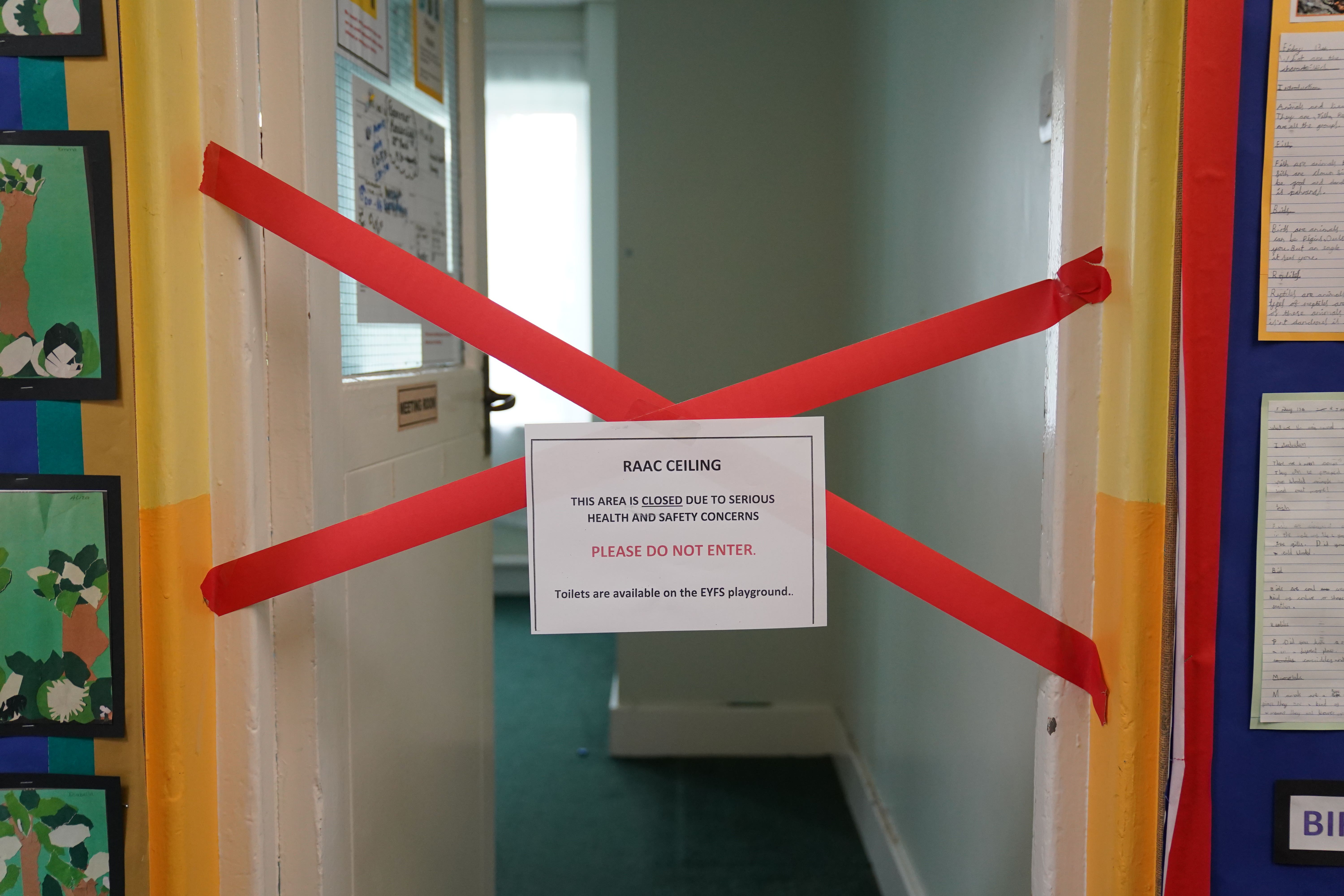Dangerous concrete may be found in other buildings, experts warn
Harrow Crown Court in north-west London was closed indefinitely last week because the material was found there.

Your support helps us to tell the story
From reproductive rights to climate change to Big Tech, The Independent is on the ground when the story is developing. Whether it's investigating the financials of Elon Musk's pro-Trump PAC or producing our latest documentary, 'The A Word', which shines a light on the American women fighting for reproductive rights, we know how important it is to parse out the facts from the messaging.
At such a critical moment in US history, we need reporters on the ground. Your donation allows us to keep sending journalists to speak to both sides of the story.
The Independent is trusted by Americans across the entire political spectrum. And unlike many other quality news outlets, we choose not to lock Americans out of our reporting and analysis with paywalls. We believe quality journalism should be available to everyone, paid for by those who can afford it.
Your support makes all the difference.Unstable concrete causing classrooms to be shut at more than 100 schools in England may be found in other public buildings, experts have warned.
Reinforced autoclaved aerated concrete (Raac), often found in roofing, is weaker than conventional concrete and is at risk of collapse, especially when it becomes wet and has inadequate steel beams to support it.
Schools across the country were forced to make last-minute arrangements on Friday as they were told their buildings may be unsafe.
You can't wait for people to get hurt before making these kinds of decisions
But the problem could be far wider, with offices, court houses, hospitals, and factories at risk of “sudden and catastrophic collapse” if Raac is not removed, specialists said.
It comes after Harrow Crown Court in north-west London was closed indefinitely last week because the material was found there, while on Friday schools minister Nick Gibb said the Government was rebuilding seven hospitals due to extensive use of Raac and would be surveying buildings “right across” the public sector.
Matt Byatt, president of the Institution of Structural Engineers, said that any high-rise buildings with flat roofs constructed between the late 1960s and early 1990s may contain Raac.
He said expert bodies had warned Government departments about the dangers of the material in 2018 – adding that “everyone was aware” of the problem.
Mr Byatt said: “Raac has been found in schools, there was a massive thing about it in hospitals and there was a courthouse shut down last week.
“They are beyond their serviceable life. We (structural engineers) raised the issue several years ago.
“It is the responsibility of building owners and estate managers to ensure their buildings are safe.
“The information was out there – everyone including all Government departments were aware of it.
“Luckily it is being dealt with now. You can’t wait for people to get hurt before making these kinds of decisions.
“You can have a sudden and catastrophic failure of units.”
Recent experience suggests the problem may be more serious than previously appreciated
A report by the Collaborative Reporting for Safer Structures published in April 2020 urged its members to check as a “matter of urgency” whether their buildings had the material.
The report said that Raac was used “primarily” in offices and schools but that it had also been found in a “wide range” of other buildings in both the public and private sector.
It said concerns had been raised about the safety of Raac roof planks as early as the 1990s and early 2000s.
“The limited durability of Raac roofs and other Raac structures has long been recognised; however recent experience (which includes two roof failures with little or no warning) suggests the problem may be more serious than previously appreciated and that many building owners are not aware that it is present in their property,” the report said.
Professor Chris Goodier, professor of construction engineering and materials at Loughborough University, said: “The scale of problem is much bigger than schools.
“It also covers much of the building stock in the country. This also includes health, defence, justice, local government, national government, and also a lot of the private sector
“Most of the towns in the country have old factories and offices and some of those will have Raac.”
Raac is a lightweight material used in roof, floor, cladding and wall construction in the UK from the mid-1950s until the 1990s.
Mr Byatt said it is “misleading” to call it concrete as it is far lighter than that term allows.
He said it is better understood as a “bubbly, breezeblock” type material which acts like a “sponge” soaking up moisture when it gets wet.
The extra weight, combined with the fact that Raac roof planks tend to dip or sag over time, makes them prone to sudden collapse, Mr Byatt said.
“It was first used because it was lightweight, cheap, and good for insulation but it wasn’t capable of bearing heavy loads,” he said.
“The problem is that for a lot of them, the steel reinforcements did not go to the end of the (Raac) planks, meaning a small section of unreinforced Raac is taking all the weight.”
The Department for Education has been approached for comment.